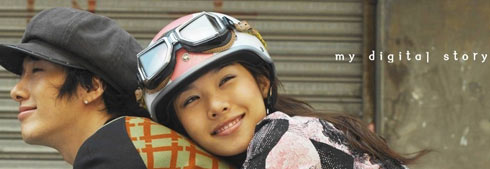开始之前,我就喜欢先看一下效果:
 张娜拉,韩国的
张娜拉,韩国的  My Digital Story
My Digital Story  不知道是什么图来的
不知道是什么图来的  我的Logo,Studio拼错了都不知道,汗一个。
我的Logo,Studio拼错了都不知道,汗一个。  四季图吧这是,但我分不清夏和秋
四季图吧这是,但我分不清夏和秋
http://www.lanrentuku.com/lanren/jscode/js-0115/
上面的链接是群上一位兄弟发的一个图片展示效果,并叹息道:jQuery什么时候才有这么cool的例子啊?
我想说jQuery写这样的例子不难吧,于是就尝试着写一下.
先看Html:
然后我们写一个CSS来控制一下这个HTML的样式,CSS比较菜,将就吧,达到效果就好:
完成上面的准备工作后,我们下面开始jQuery代码。
首先就是做一些初始化的工作:
$(document).ready(function(){ var imgDivs = $("#photoShow>div"); var imgNums = imgDivs.length; //图片数量 var divWidth = parseInt($("#photoShow").css("width")); //显示宽度 var imgWidth = parseInt($(".photo>img").css("width")); //图片宽度 var minWidth = (divWidth - imgWidth)/(imgNums-1); //显示其中一张图片时其他图片的显示宽度 var spanHeight = parseInt($("#photoShow>.photo:first>span").css("height")); //图片介绍信息的高度 imgDivs.each(function(i){ $(imgDivs[i]).css({"z-index": i, "left": i*(divWidth/imgNums)}); $(imgDivs[i]).hover(function(){ //处理鼠标进入的时候 },function(){ //处理鼠标离开的时候 }); }); });
首先我们定义了一些变量,方便我们后面使用。
然后就是使用了一个 each() 的函数在每一个匹配的元素进行事件处理。这里是每一个<div class="photo"> 元素分别进行事件的处理。
然后看一下下面这一句:
$(imgDivs[i]).css({"z-index": i, "left": i*(divWidth/imgNums), "top":"0px"});这句是通过CSS来控制每一个图片的层次和显示位置。
然后就是用一个 hover() 函数来处理鼠标的hover事件。
首先看一下鼠标进入图片的时候该怎么处理:
$(imgDivs[i]).hover(function(){ //$(this).find("img").css("opacity","1"); $(this).find("span").stop().animate({bottom: 0}, "slow"); imgDivs.each(function(j){ if(j<=i){ $(imgDivs[j]).stop().animate({left: j*minWidth}, "slow"); }else{ $(imgDivs[j]).stop().animate({left: (j-1)*minWidth+imgWidth}, "slow"); } }); },function(){ //处理鼠标离开时候的事件 });
在这里所有的动画效果都是通过 animate() 函数修改CSS来控制元素的显示位置来实现的。
这里注意一下就是在调用 animate() 函数前都调用了 stop() 函数。stop() 函数是用来停止当前元素的所有执行中的事件。
j<=i 的判断就是判断鼠标hover的当前图片和该图片前面的图片与该图片后面的图片的分割线。
鼠标离开的处理也差不多,下面之完整的代码:
$(document).ready(function(){ var imgDivs = $("#photoShow>div"); var imgNums = imgDivs.length; //图片数量 var divWidth = parseInt($("#photoShow").css("width")); //显示宽度 var imgWidth = parseInt($(".photo>img").css("width")); //图片宽度 var minWidth = (divWidth - imgWidth)/(imgNums-1); //显示其中一张图片时其他图片的显示宽度 var spanHeight = parseInt($("#photoShow>.photo:first>span").css("height")); //图片介绍信息的高度 imgDivs.each(function(i){ $(imgDivs[i]).css({"z-index": i, "left": i*(divWidth/imgNums)}); $(imgDivs[i]).hover(function(){ //$(this).find("img").css("opacity","1"); $(this).find("span").stop().animate({bottom: 0}, "slow"); imgDivs.each(function(j){ if(j<=i){ $(imgDivs[j]).stop().animate({left: j*minWidth}, "slow"); }else{ $(imgDivs[j]).stop().animate({left: (j-1)*minWidth+imgWidth}, "slow"); } }); },function(){ imgDivs.each(function(k){ //$(this).find("img").css("opacity","0.7"); $(this).find("span").stop().animate({bottom: -spanHeight}, "slow"); $(imgDivs[k]).stop().animate({left: k*(divWidth/imgNums)}, "slow"); }); }); }); });
本人水平一般,代码还有待改善。
自己觉得吧用JS来写这种效果不大实际,因为占用的CPU比较高,还是用Flash实现的好。偶写这个完全是为了学习.
或者哪位大大用silverlight也写个这样的效果的教程给偶学习下silverlight。



 }
} border
border
 overflow
overflow